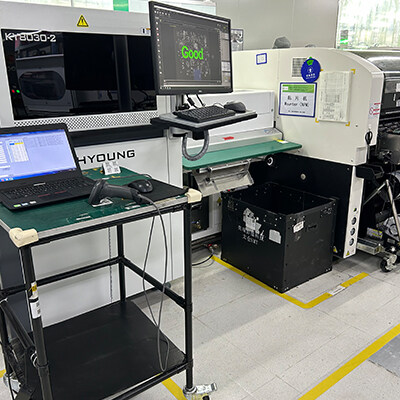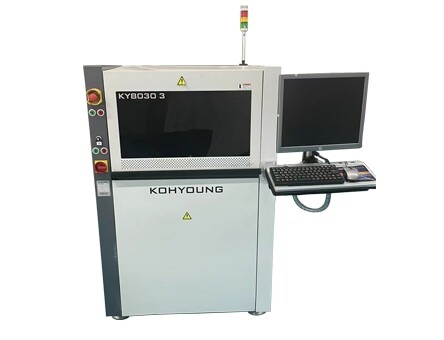Email format error
Email cannot be empty
Email already exists
6-20 characters(letters plus numbers only)
The password is inconsistent
Email format error
Email cannot be empty
Email does not exist
6-20 characters(letters plus numbers only)
The password is inconsistent


Solder paste inspection (SPI) is a crucial step in surface mount technology (SMT) assembly. It involves the examination of solder paste deposits on printed circuit boards (PCBs) before component placement. In this comprehensive blog post, we will delve into the concept of solder paste inspection, its significance in ensuring high-quality solder joints, and the role of the KOHYOUNG SPI machine in this process.
Solder paste inspection is a quality control process that verifies the accuracy and integrity of solder paste deposits on PCBs. It utilizes advanced imaging technology to analyze the solder paste’s volume, shape, and alignment. By inspecting the solder paste before component placement, manufacturers can identify and rectify any defects or inconsistencies, ensuring reliable and robust solder joints.
Solder joints are critical for the electrical and mechanical integrity of electronic assemblies. Poorly formed or defective solder joints can lead to various issues, including electrical shorts, open circuits, and reduced product reliability. Solder paste inspection plays a vital role in preventing these problems by detecting and addressing potential issues early in the assembly process.
Preparation: Before inspection, the PCB is typically cleaned to remove any contaminants that may affect the solder paste’s performance. The PCB is then positioned in the SPI machine for analysis.
Imaging and Analysis: The KOHYOUNG SPI machine, renowned for its accuracy and reliability, captures high-resolution images of the solder paste deposits. These images are analyzed using sophisticated algorithms to measure critical parameters such as volume, height, area, and alignment.
Defect Detection: The SPI machine compares the measured parameters against predefined specifications and identifies any deviations or defects. Common defects include insufficient or excessive solder paste, misalignment, bridging, and tombstoning.
Data Analysis and Feedback: The SPI machine generates detailed reports and statistical data, providing valuable insights into the solder paste quality and process performance. This information enables process optimization and continuous improvement.
The KOHYOUNG SPI machine is widely recognized for its advanced imaging capabilities and precise measurement algorithms. Its high-speed inspection process ensures efficient production throughput without compromising accuracy. With its user-friendly interface and intuitive software, the KOHYOUNG SPI machine enables operators to easily interpret inspection results and make informed decisions.
Quality Assurance: SPI helps ensure the quality and reliability of solder joints, minimizing the risk of defects and failures in electronic assemblies.
Process Optimization: By analyzing SPI data, manufacturers can identify process variations, optimize stencil design, fine-tune printing parameters, and enhance overall production efficiency.
Cost Reduction: Early detection and rectification of solder paste defects reduce rework and scrap, resulting in cost savings and improved yield.
Solder paste inspection is a critical quality control process in SMT assembly. By analyzing solder paste deposits before component placement, manufacturers can identify and rectify defects, ensuring reliable and robust solder joints. The KOHYOUNG SPI machine, with its advanced imaging technology and precise measurement algorithms, plays a significant role in this process. Incorporating SPI into the assembly workflow enhances product quality, process efficiency, and overall customer satisfaction.